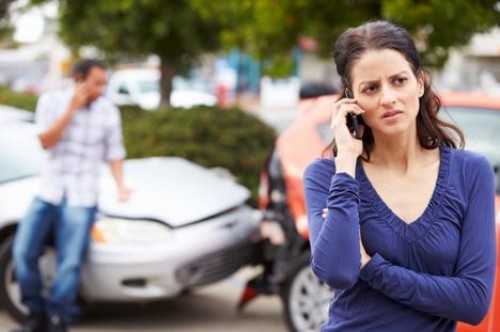Being involved in a motor vehicle collision can be a frightening and stressful experience. The lingering effects can have a negative impact on your physical, emotional and financial well-being for years to come.
Although a motor vehicle collision is sudden, it’s important to be well-versed in the proper steps to take following an accident.
Post-Accident Steps
There are some crucial steps the Burlington lawyers at Martin & Hillyer Associates urge you to take following a motor vehicle collision.
1. Stop and Ensure Your Safety
Following a car accident, it’s a good idea to stop and take a brief moment to collect your thoughts. Check yourself and your passengers for injuries. If it is safe to do so, move your vehicle and/or yourself to a safe area, away from moving traffic. Remember, leaving the scene of a collision is a serious offense.
2. Call the Police
You should always contact the police regardless of how serious you feel the accident was. If police arrive on scene they will complete a report of the accident. If not, they will direct you to contact the appropriate collision reporting centre.
3. Take Pictures and Video
It may be beneficial for you to document the accident. Make sure to record the damage to the vehicle(s) involved by taking pictures and video from as many angles as possible. You should also try to capture photos or video of the surrounding area, to better identify the precise location where the collision occurred. It’s better to be safe than sorry – your car accident lawyer can always take a look and see if they will be useful or not.
4. Exchange Information and Speak with Others
You should be sure to document information if there were other cars involved in the accident. You should collect and share the following information with others directly involved in the crash, as well as any witnesses who are willing to cooperate:
- Name
- Address
- Phone number
- Driver’s license number
- Car insurance company
- Insurance policy number
- License plate number
- Make, model and colour of vehicles involved
Take the time to hear any witness’s version of the accident as well. This can fill in any missing blanks for you, and give you a heads up as to what others may have witnessed.
5. Seek Medical Attention
The Burlington lawyers at Martin & Hillyer Associates believe your health should be your first priority. Even if you are not aware of major symptoms immediately after a crash, you should still get examined by a medical professional as soon as possible – either at a hospital, at a walk-in clinic, or by your family doctor.
6. Report the Accident
Call your insurance company’s claims reporting department or your insurance broker to begin the process of reporting the accident. This will open the claim and begin paperwork. If the police did not arrive on scene, you should also take this time to report the accident to a collision reporting centre.
7. Consider Legal Assistance
A local car accident lawyer like the experts at Martin & Hillyer Associates can help you deal with your insurance company or start a claim against the driver who caused the collision if you aren’t at fault.
Seeking the Help of a Lawyer
If you are unsure if you require the help of a car accident lawyer in Burlington, it doesn’t hurt to ask. Martin & Hillyer Associates offers a free, no-obligation consultation to answer your questions and tell you about your options.
At the end of the day, you should ensure the best for yourself following a motor vehicle collision. Getting advice from an experienced local lawyer as soon as possible after a crash can help protect your physical, mental or financial well-being in the long-term.
You can schedule a consultation online or contact us today to explore your options with the help of our Burlington law firm.


